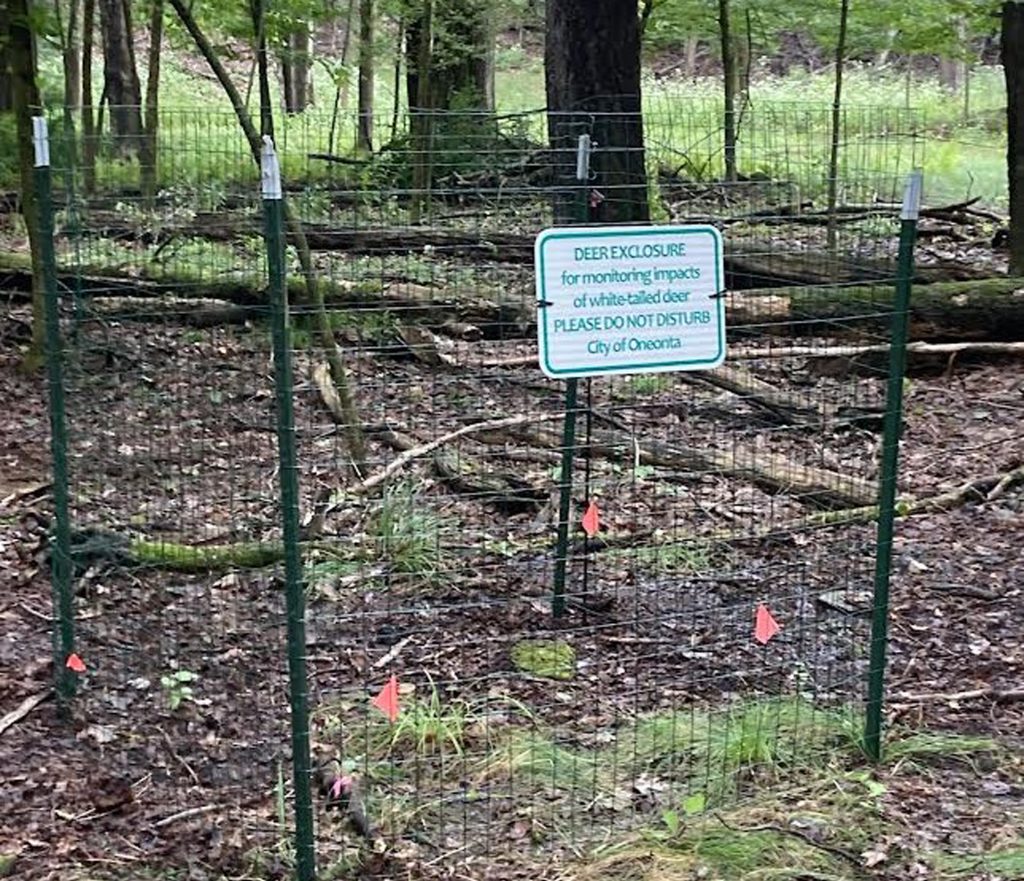
Exclosures Help Demonstrate Impact of Deer Overbrowsing
By SANDRA BRIGHT
ONEONTA
As you stroll through Wilber Park in Oneonta, you may notice three new fenced-in areas, small enough to beg the question of purpose. These are deer exclosures, meant to monitor and show the impacts on the environment of overbrowsing by white-tailed deer.
The park has seen a great deal of damage from an exploding population of deer in recent years. As older trees die a natural death, there should be young saplings, one- to five-feet tall, rising to take their place, but overbrowsing destroys many and stunts the growth of others. Hemlock trees look sickly, with few needles left.
Local botanists suggest that spring wildflowers such as trillium and bloodroot are being eaten before they can bear fruit, often before they can bloom. Hungry deer, competing for dwindling resources, browse on less-desirable food like beech tree leaves and mayapple. Other signs of deer overpopulation are the expanding areas of ferns and invasive plants, and smaller trees with no foliage below 4-5 feet (the height most deer can easily reach). What would the forest look like without such overbrowsing?
Over the coming months and years, the area inside the exclosure will recover and show what could be growing if not for the deer. The area outside the fence can be compared to what grows within as the deer population is reduced to a sustainable level. The public location of these exclosures, which were funded by a grant from the Otsego County Soil and Water Conservation District, will help educate visitors about the impacts of a species that has become dominant in an ecosystem.
Sandra Bright is a member of the Oneonta Deer Management Task Force.

